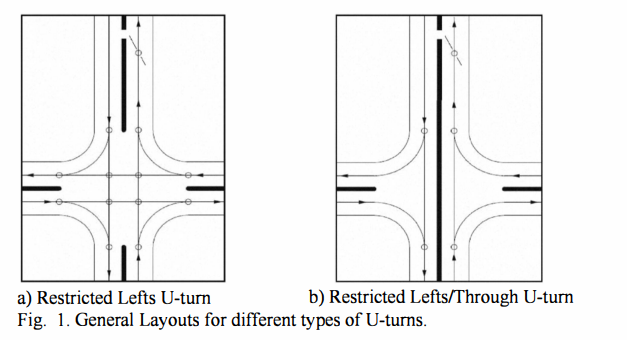

Microsimulation approach to evaluate the use of restricted lefts/through U-turns at major intersections - A case study of Cairo-Egypt urban corridor
The V-turn is an access management technique for at-grade intersection treatments; reducing conflicts and improving safety along arterial roads. The V-turn is mainly used as an alternative to direct left turns at intersections by replacing the full median opening with a directional median opening; this solution is called restricted lefts u-turn intersection treatment (Restricted Lefts V-turn). A full median blocking, with downstream directional openings is another type of V-turns, which called (Restricted LeftsfIrough V - turn). In Egypt, many urban signalized intersections have been replaced by Restricted LeftsfIrough V-turn, with the aim of improving traffic operations. Several benefits (safety as well as operational benefits) have been attributed to the V-turn solution. However, the effectiveness of any solution is contingent upon its proper use. Reduced capacity and increased accident exposure are direct outcomes of traffic flow turbulences around improperly designed (or ineffectively adopted) V-turn. This study investigates the potential of using a microscopic traffic simulation model for testing and evaluating different intersection treatments. A simulation model has been developed and calibrated for a typical urban intersection, in Cairo, using "Quadstone Paramics" software. The developed model was used to evaluate the operational impacts of different intersection treatments including different V-turn solutions for a case study of a major intersection with high traffic volumes. The simulation results showed that the u-turn solution is not the best solution for the adopted case study; other access management techniques such as signal control showed better performance results. Furthermore, the need for deducing guidelines for the effective deployment of V-turns could be clearly depicted. ©2010 IEEE.